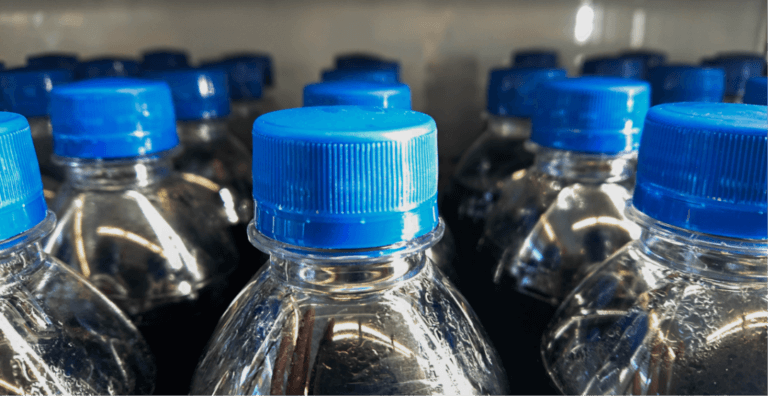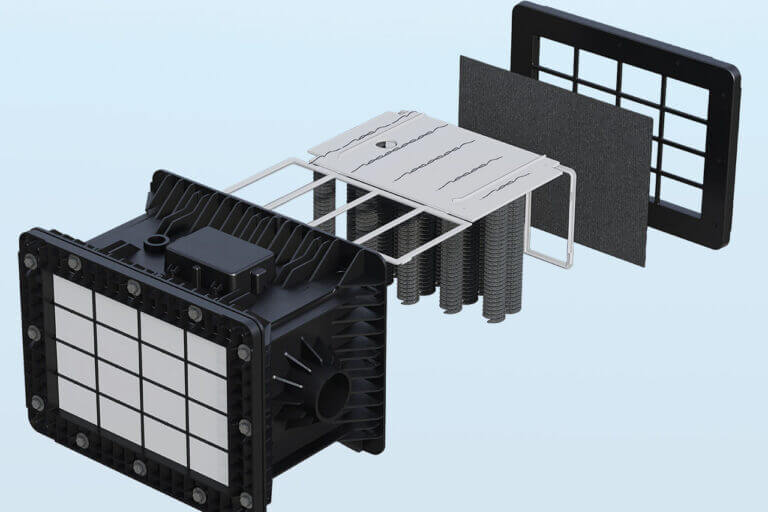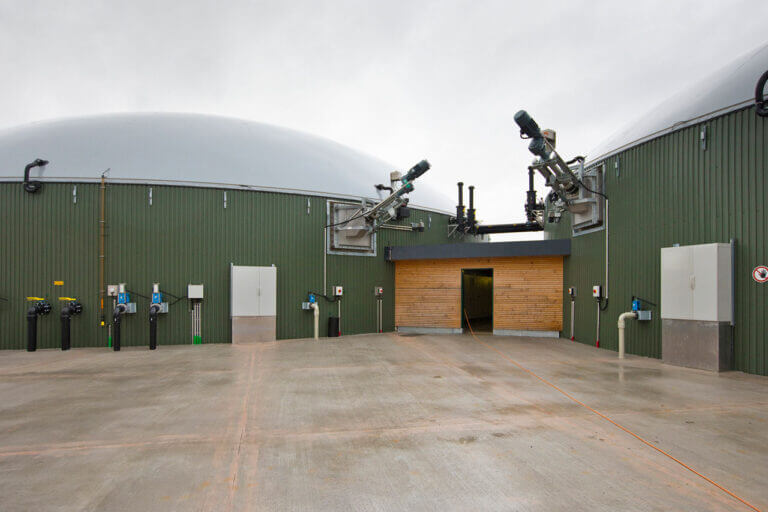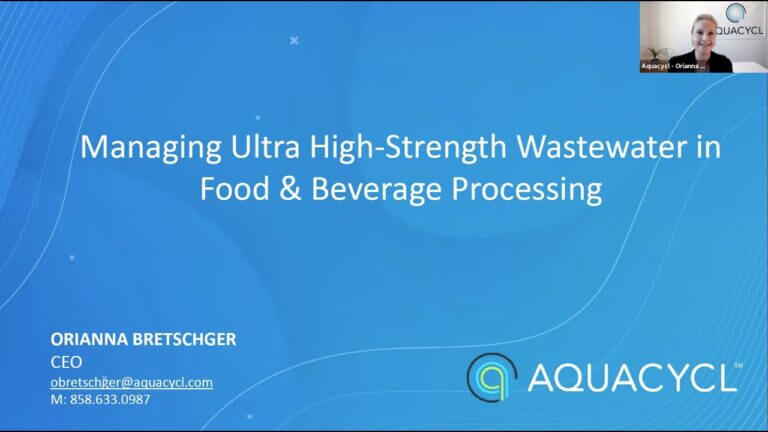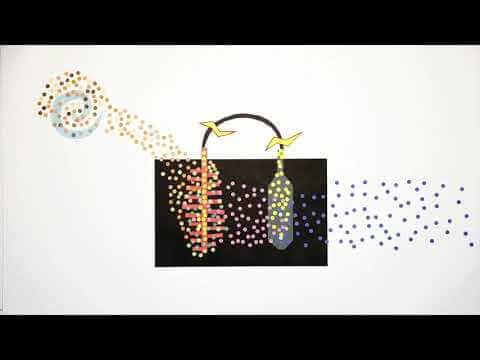Wastewater May Be Your Answer
Let’s keep it straight, you will not achieve your carbon and water goals if you’re not thinking about wastewater. At least, it would be very difficult to do so.
There is no need to forgo parts of your process or damage your bottom line trying to achieve the goals you set forth to combat our climate and water crisis. An often-overlooked portion of your process, wastewater, is many times the simplest and most effective way of reaching these goals.
The truth is that wastewater tends to be left out of sustainability conversations, especially in a business setting, but it has major ties with your emissions and water use. Let me show you how.
Wastewater and Carbon Emissions
Carbon goals are often associated with reducing emissions across Scopes 1, 2 and 3. While you may have successfully reduced emissions in Scopes 1 and 2, achieving your goals for Scope 3 (the largest and most difficult scope) can be challenging. This is common with most businesses we have worked with, but the good news is that wastewater treatment can actually decrease emissions across all three scopes.
Scope 1
Scope 1 emissions are any direct emissions from operations. They can come from burning fuel, company vehicles, refrigerant emissions, and so on. These are the easiest emissions to lower because they can be directly tracked and measured from your operations and will be affected by changing processes.
Wastewater treatment releases Scope 1 GHG emissions through its process, primarily due to the storage and breakdown of sludge. If you have an anaerobic treatment process, then your Scope 1 emissions may result directly from unintended methane release.
In fact, a recent Princeton study showed that anaerobic digesters actually emit nearly double the methane than previously thought. Those unaccounted emissions may come back to bite you and affect the Scope 1 emissions emitted from your facility.
To lower these emissions, choose an onsite wastewater treatment that has low emissions and preferably doesn’t produce methane. A technology like Aquacycl’s BETT system does just that and has next to no sludge production, a benefit when incorporating onsite wastewater treatment while trying to lower Scope 1 emissions.
Scope 2
Scope 2 emissions are indirect emissions produced from the generation or purchase of energy. They come from electricity used to power your facility, energy required to heat boilers, energy used by cooling towers, and so on.
These emissions can be mitigated by lowering energy use throughout your facility or producing energy through solar or wind power, or biogas production.
Wastewater treatment, especially aerobic treatment processes, are inherently energy-intensive. The energy required to run and operate onsite treatment systems is often extremely high, significantly increasing Scope 2 emissions. However, there are technologies that help mitigate this, primarily to increase efficiency or energy recovery during treatment. This may involve the burning of biogas (methane) produced during anaerobic treatment, which can generate energy to power the system.
This will help you mitigate Scope 2 emissions by lowering the energy use of your treatment system and allowing you to utilize the energy produced elsewhere in your processes. Unfortunately, this biogas often leaks out of the treatment system, more than previously estimated, as found in the Princeton study referred above, adding to your Scope 1 emissions.
The upside is that there are treatment technologies, such as Aquacycl, that are energy-neutral without generating biogas. A win-win when it comes to Scope 1 and 2 emissions.
Scope 3
You may be thinking, “Why would I want onsite wastewater treatment if it may increase my Scope 1 and 2 emissions?” That’s because of the dreaded Scope 3.
Scope 3 is the emissions category that companies struggle with the most to meet their goals. This is because Scope 3 emissions result from any indirect emissions upstream or downstream of activities from the organization. They come from assets not owned by the organization but indirectly affect its value chain, making them a challenge to measure and therefore lower.
With new regulations enforcing the reporting and disclosure of Scope 3 emissions, many companies are looking for new avenues to lower these emissions, especially since they often account for the majority of a company’s emissions. The good news is that if you are managing wastewater offsite, you have an opportunity to significantly lower these emissions.
Whether you’re trucking or hauling your wastewater for land application or offsite treatment, or you’re discharging directly to sewer collection systems, these actions account for Scope 3 emissions. The emissions produced from the trucks, emissions from land filling or sludge incineration, emissions and energy consumption from downstream treatment, and any other emissions from the moment your wastewater leaves your facility to when it is released into the environment add into your Scope 3 emissions.
By employing onsite wastewater treatment, you can eliminate offsite hauling and minimize the emissions from your discharge, significantly trimming down those Scope 3 emissions. The higher your BOD/COD concentration, the more energy it takes to treat, so utilizing an energy-neutral onsite treatment system that allows you to discharge the lowest concentration process water possible will help you reach your Scope 3 goals. Utilizing an energy-neutral, low-emission technology for this onsite treatment ensures your emissions across all three Scopes are minimal when it comes to wastewater.
Wastewater and Water Efficiency
Now let’s talk wastewater and water goals, a simpler connection to make. It makes sense that the more water usage you have, the more wastewater you produce. But how can you utilize that wastewater to improve water efficiency and reach those goals?
Wastewater can actually be a great resource for this. While every portion of your process may be optimized for efficient water use, reductions to water-use can only go so far, the only way to reach best-in-class efficiency is to turn to the process water you discharge.
Say Goodbye to Dilution
The issue with companies improving water efficiency is that they then are utilizing less water in their processes, which in turn makes the wastewater they produce significantly more concentrated. This will make it difficult to reach discharge permits and increase the energy requirements for treating the wastewater – something we don’t want if also trying to achieve carbon goals.
The solution most companies take is to simply dilute the wastewater by adding in “cleaner” water, which of course is counter intuitive to improving water efficiency. This is because up until recently, water treatment technologies could only handle up to a certain amount of organic load (BOD/COD), which was much lower than most industrial process waters contained, leaving companies stuck between a rock and a hard place.
Thanks to technological advancements, there are treatment technologies that can treat the ultra-high strength streams seen in low water-use industrial facilities. But even with all the water efficiency improvements in your facility, and being able to treat wastewater without diluting it, you may still be short of reaching those water goals. So, let’s take it one step further and discuss process water reuse.
Enabling Water Reuse
When properly treated and managed, your wastewater, or process water – the water generated from industrial manufacturing processes – can be reused throughout your operations.
Process water that reaches reuse quality standards can be utilized for many non-potable part of your process. This includes cooling tower makeup, the first rinse of your CIP, non-production warehouse cleaning, irrigation for non-agriculture plots, and other uses depending on what your business permits allow.
This is major for companies looking to lower their water usage as many of these processes account for a large portion of the water use in industrial operations. Identifying the parts of your process that are most water-intensive yet allow process water reuse will get you the most water savings.
But, in order to achieve reuse quality standards, multiple onsite treatment steps are required. Aquacycl’s system enables onsite reuse by removing the organics and solids in the wastewater, without dilution, then utilizing a compliment technology to achieve final quality standards (which may be necessary depending on which portion of your process you will reuse the water for). Because the Aquacycl system will remove a majority of organics with minimal energy- and carbon-footprint, the complimentary technologies can operate more efficiently and with less emissions.
Viewing and utilizing wastewater as a resource in your operations helps you go that extra step it takes to achieve your water goals.
Utilizing the Untapped Resource
It’s evident wastewater isn’t just a byproduct you need to deal with but a strategic pathway toward achieving your carbon and water goals. Overlooking wastewater in your sustainability initiatives could mean missing out on significant opportunities for emissions reduction and water efficiency.
To utilize this untapped resource, you must work with a technology partner that understands your business and sustainability needs and can bring you a holistic solution that helps you achieve your goals while helping your bottom line. That’s why Aquacycl is one of the best options when looking to incorporate wastewater into your sustainability plan.
We offer the only high-strength wastewater treatment technology that can treat your industrial wastewater at 90% less emissions, is energy neutral without producing methane, and enables onsite process water reuse. But we don’t just provide the technology, we become your water management partners, building a custom solution that takes into account your business needs and optimizes your operational processes.
Don’t let wastewater be an afterthought in your sustainability strategy— contact us to utilize it as a valuable resource and achieve your carbon and water goals.




